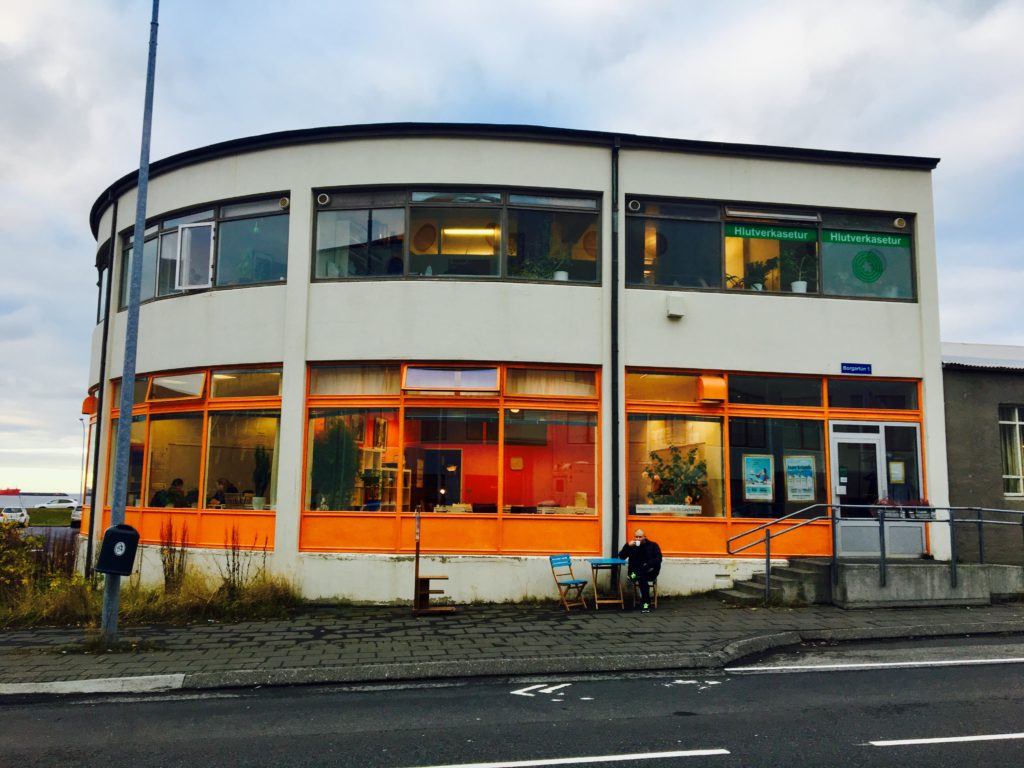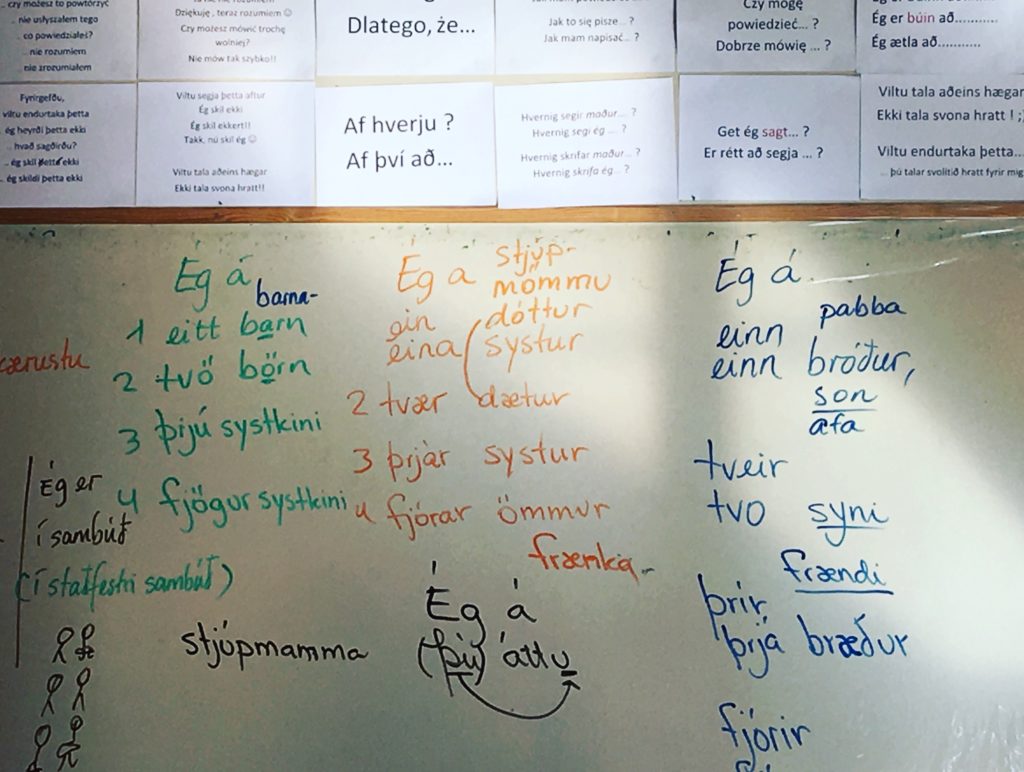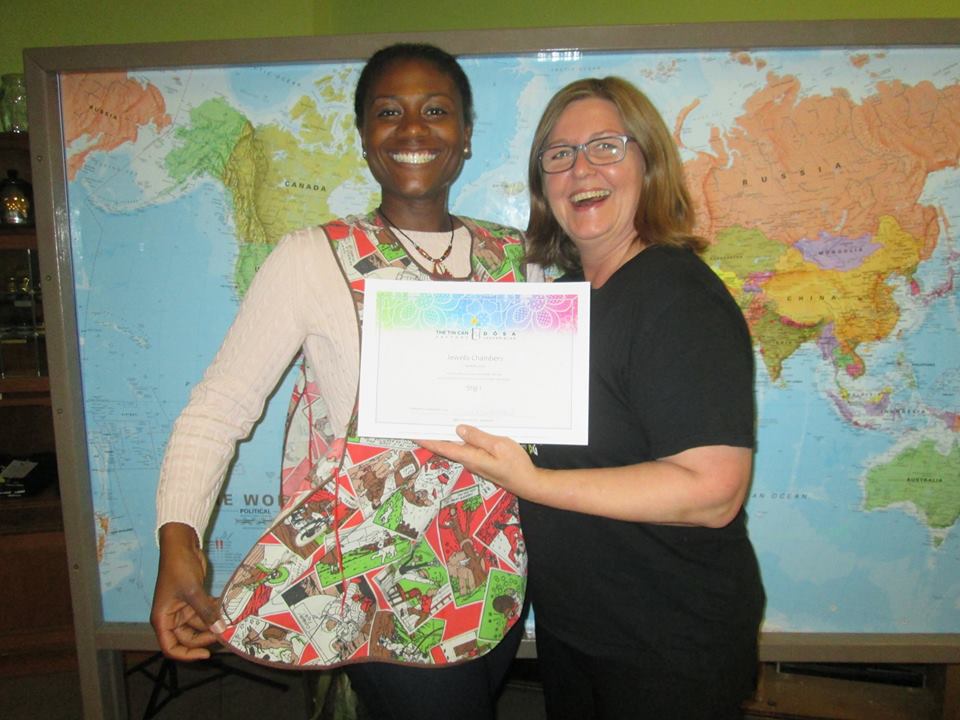

Within the first month of moving to Iceland, I knew that I had to step up my language learning game by enlisting some expert help, so I started searching online for Icelandic language classes in the Reykjavík area. This was my first time taking a language course in 10 years! It is hard to believe I took an Arabic class that long ago but that is a story for another day. 🙂 Many factors such as the teaching method, cost, class time, school location, and class size were taken into account before I made my final decision to attend The Tin Can Factory.
How I found The Tin Can Factory
It was mid July of 2016 when I starting searching for classes and I was itching to find a course that started ASAP. However, I soon found out that most places of business screech to a halt in Iceland during summer, except the tourism industry, because many of the employees are away on vacation. However, I was determined to find something! After consulting the all knowing Google search engine with the term “Icelandic language classes in the Reykjavík area,” I only found a few helpful links on the first couple of pages. I decided to search the Facebook group “Away From Home: Living In Iceland” to see if there were any firsthand accounts from foreigners that had taken Icelandic language classes in Reykjavík. There were plenty of opinions shared but it seemed that many people recommended Háskóli Íslands, The Tin Can Factory or MúltiKúlti.
What Set The Tin Can Factory Apart
Aside from the fact that The Tin Can Factory was the only language school that had a course starting in mid August, I chose the school because of its unique teaching style and the phone conversations I had with Gígja, the school’s owner and co-founder. Please note that the course they were offering at the time is considered a speed course because it only meets 2 days a week for 4 weeks, and I paid 13.000 ISK. Their normal classes meet for 6 weeks, 3 days a week and it costs 42.900 ISK. I am not sure if the speed course runs only in the summer or at other times of the year.
Because the school’s website didn’t answer all of my questions, I called several times to find out if the Level 1 speed course was right for me. Gígja informed me that the class size is usually about 12 students, depending on how many people enroll, and that the classes were only taught in Icelandic. I am a big supporter of language immersion and knowing that The Tin Can Factory uses this style of teaching made me very excited about signing up. The cherry on top was that we would also learn to cook traditional Icelandic dishes as part of our course. Once I registered for the class, I anxiously waited for it to start on August 15th.
My Level 1 Speed Course Experience
Before the first day of class, I brushed up on many of the Icelandic words and phrases that I had learned on my own during the past year. Yes, I know I am a nerd but I couldn’t help myself. 🙂
On the first day of the course, I tried to take in everything that I saw. The school is a bright orange color on the outside so it was easy to spot when I walked from the Hlemmur bus stop. Once you step inside you see a myriad of shoes. As part of their environmental policy, The Tin Can Factory asks that everyone who enters the building take off their shoes and leave them in the foyer. Less shoes, means less dirt, which translates to less need for using chemicals and water to clean. Gunnar and I do the same thing at our house, so I was more than happy to respect that policy.
Immersive Language Learning
During the first lesson, I was surprised at how comfortable I felt listening to our teacher Gígja speak to us in Icelandic. She was speaking slowly but I could understand her and that filled me with joy. After the first couple of lessons it was apparent to me that there was a pretty large gap between students in the class – some had previous knowledge of Icelandic while others were immersing in it for the first time. It’s not a surprise that those who had previous knowledge of Icelandic had a much easier time understanding what was being said while many of the first timers struggled. However, I think Gígja did a good job of managing the different levels of knowledge and tried to give everyone plenty of chances to speak throughout the 3 hour and 25 minute class time.
3 hours and 25 minutes is a long time to do anything twice a week after you have been working for a least 8 hours, but I usually felt like the class time flew by because of the variety of activities that they set up for us. There was a mixture of playing games, watching videos, reading about Icelandic history and culture, cooking traditional Icelandic food, practicing colloquial phrases and interacting with each other in the language. The Tin Can Factory created the learning materials for the class and most of the time I found the material to be helpful, but there were also times when the print quality was not very good or I thought the exercise was not that useful.
Potential Areas for Improvement
Even though our grammar was sometimes corrected during class, there were only a few times when we really focused on grammar rules. These were my favorite lessons because it gave us some insight on how some words are conjugated and familiarized us with forming sentences correctly. It is always a relief when you can start to see a method to the madness. 🙂 We were not aware of what we were going to learn in class each day and it seemed like the lessons hopped from one subject to another without rhyme or reason. I think it would have been nice to have themes for the day or some way of knowing what lessons were coming up. A syllabus might not be their style, but providing something along those lines is potentially a good way to manage people’s expectations.
Our homework usually consisted of writing in our dagbókina mína, which roughly translates to mean “my journal” in English. During the first couple of weeks, it was pretty fun to write simple sentences about our days and read it out loud to the class, but the assignments were never varied enough to keep it exciting. By the third week, I found writing in dagbókina mína to be quite boring and not challenging. I know homework won’t always be exciting but I do think there is an opportunity here to change up the assignments so it at least feels like we are doing something new and challenging.
Cooking!
I love to cook and I was super excited when I learned that cooking traditional Icelandic food was part of the course. Unfortunately, we only cooked once during the speed course and that was on the last day of class when we received our certificates of completion. I wish we had been able to cook more because it was really fun to learn certain kitchen tools, food measurements and ways of cooking in Icelandic. Plus, I am vegan and Gígja was kind enough to provide ingredient substitutions for the Icelandic pönnuköku (pancakes) we made. It was a really fun experience and the food turned out to be yummy.
The Wrap Up
Overall, I enjoyed the Level 1 speed course at The Tin Can Factory and I think the language immersion style was helpful in pushing me to speak Icelandic. I definitely recommend the Level 1 speed course if you are looking for Icelandic language classes in the Reykjavík area, especially if you have been dabbling in the language and you really need an environment that encourages you to speak. Even though it was probably quite hard for the people that were unfamiliar with many of the Icelandic words in the beginning, towards the end you could see the massive progress they made. Plus, my teacher and classmates were lovely people and that made the experience even more enjoyable. Because I have so much more to learn, I decided to register for the Level 2 course. I look forward to sharing a review post on that experience in the coming weeks.
Have you taken a course in Icelandic either online or in person? I would love to hear about your experience in the comment section.
Þakka þér fyrir að lesa og sjáumst fljótlega! (Thank you for reading and see you soon!)
Please note: This is not a sponsored review and I did not receive any compensation for sharing my opinion. All of the views expressed in this post are solely my own and are not on behalf of The Tin Can Factory or any third party.




